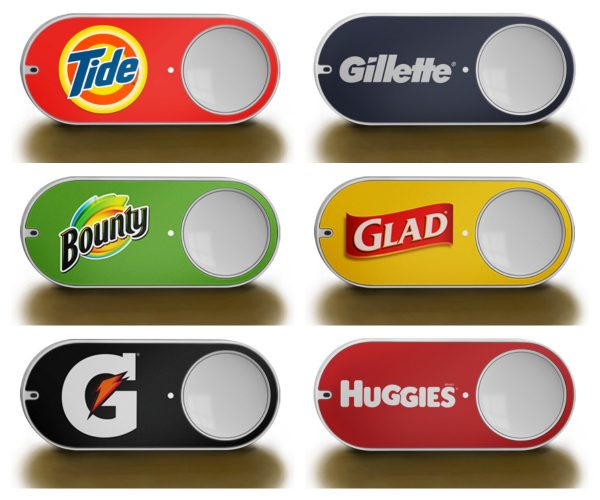
Let’s face it, it is not often that Amazon does not make news headlines. They have built their business by making it easy for consumers to purchase a wide variety of things online. From subscription-style services to their patented on-click ordering tool to the push of a button, Amazon seems they are not going to stop until we, as consumers, do not need to step foot in another retail brick-and-mortar store ever again. This new tool brings a whole new level to the omni-channel experience by creating a channel out of any object (i.e. magnet on your fridge). Their theory is that if you are doing laundry and notice that you are running low on detergent, a consumer can press a Tide-branded button stuck to your washing machine that will allow you to immediately re-order the product. Obviously for Amazon the benefits will be more repeat, regular business that will definitely pay for the hardware a thousand times over. As a company who is a global leader in driving data, Amazon collects massive amounts of data on the when, how, and frequency consumers purchase products. With this new service, Amazon could collect even more data on the items we purchase day in and day out.
As other companies and sites have been churning the rumor mill with “buy” buttons, Amazon, as usual is first to market with the new Amazon Dash. Tools like Amazon’s Dash, have the capability to provide CPG brands the edge they have been looking for in the market where the industry’s traditional large companies have been getting serious competition from small players. Amazon, and other e-commerce sites have traditionally seen small, specialty brands have a larger playing field. But with the introduction of Dash, larger brands like Tide, Huggies, etc. could help pave the way to have a stronger hold in the e-commerce world. Although Amazon has not stated clearly yet how the model would operate, Dash could easily help become a channel for big brands to bid for buttons (think mini-aisle end caps) that would exist in millions of households. As it was just introduced, Dash is in the experimental stage yet the brand presence partnering with them is nothing short of serious: P&G (Tide, Olay, Bounty, Gillette), Clorox, Coca-Cola, Kimberly-Clark (Cottonelle & Huggies). These companies make products that are common items that consumers row low on and allow us to easily re-order.
Right now, Dash is by invitation only and only to those that are Amazon Prime members. Amazon Prime already has 40 million members. Jason Caide, an ecommerce sector leader for Millward Brown has reported that Amazon Prime members’ conversion rates are roughly just over 60% vs the same people converting at a 6% rate when visiting other sites like Walmart.com. With those numbers it is no surprise that big CPG players would want to partner with Amazon.
Amazon Dash also may create the possible shift in the future of retail. The Internet of Things has already begun to infiltrate our daily lives by making our lives a bit simpler with things like the Nest, Phillips Hue, etc. but this will allow consumers the convenience of purchasing with one click. As Dash expands and grows with different partners, it will allow consumers to literally turn everything in their home into a shopping cart. Amazon is also developing a program with appliance companies and device makers that will help build the replenishment services into their actual products taking this “re-order innovation” to the next level. Whirlpool is developing a washing machine that will itself detect when a consumer is running low on detergent and re-order the detergent automatically from Amazon. Another company, Quirky, is developing a coffee pot that will re-order beans from Amazon before you run out.
We have talked so much about the Connected Consumer and the actual products we, as consumers, can be connected to (Phillips Hue, the Nest, Smart tvs, cars, etc.). So as these simple things that consumers out to the store to purchase can automatically be re-ordered without even walking out the door, what impact will it have on our local and big box brick-and-mortar retailers? The more connected devices that are produced and implemented, the higher the probability that consumers will not visit their local grocer or Target and order their everyday items from Amazon instead. So although CPG’s could see a huge boost from this service, it may have the opposite effect on the brick-and-mortar retail industry.
With these new technologies, are we getting closer to eliminating the need for the brick-and-mortar store?
